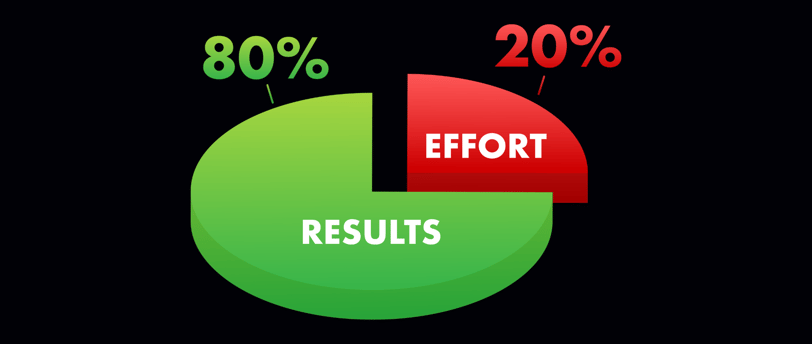Maximizing Business Efficiency with the Pareto Principle: A Guide for Entrepreneurs
This blog explores the transformative power of the Pareto Principle for business owners. Often referred to as the 80/20 rule, the principle suggests that a small number of efforts often yield the majority of results. The post delves into practical applications of the principle in areas such as product offerings, time management, customer relationships, operational efficiency, and marketing. By applying these insights, entrepreneurs can significantly enhance their efficiency and profitability.
Dr. Frances Robbins
9/27/20232 min read


In business, efficiency is the linchpin that often determines success or failure. Business owners constantly seek ways to do more with less, aiming to allocate resources where they generate the maximum impact. One powerful concept that can guide this quest for operational excellence is the Pareto Principle. This principle, also known as the 80/20 rule, provides a framework to optimize various aspects of a business, from time management to customer relationships.
What is the Pareto Principle?
Named after Italian economist Vilfredo Pareto, the Pareto Principle posits that 80% of effects come from 20% of causes. Initially observed in the context of wealth distribution, where 20% of the population owned 80% of the land, the principle has transcended its economic roots. Today, it finds applications in a multitude of fields, such as software engineering, healthcare, and, of course, business management.
The principle doesn't mandate an exact 80/20 split but emphasizes a skewed distribution of effects and causes. It suggests that a small number of efforts often produce the most results. Understanding this inherent imbalance can be transformative for business owners.
Identifying Core Product Offerings
Product offerings are one of the first applications of the Pareto Principle in a business context. Companies often find that a minority of their products account for a majority of their sales. Scrutinizing sales data to identify these key products allows businesses to focus on promoting them further or even expanding the range around these top performers. This targeted approach can significantly boost profitability.
Time Management for High-Impact Activities
Time stands as the most finite and valuable resource for a business owner. The Pareto Principle advises entrepreneurs to concentrate on activities that yield the most significant benefits. Analyzing one's daily routine to discern which tasks contribute the most to business growth enables a more efficient allocation of time. Eliminating, automating, or delegating low-impact activities frees time for high-value tasks like strategy planning or business development.
Refining Customer Relationships
Another crucial application of the Pareto Principle relates to customer relationships. Often, a small percentage of clients contribute to a large chunk of revenue. Recognizing these valuable clients can help a business focus its customer service efforts and rewards programs. Tailoring personalized experiences for this group increases customer loyalty and promotes higher spending per customer.
Streamlining Operations and Costs
Operational efficiency often translates to reduced costs and increased profitability. Through the lens of the Pareto Principle, business owners can evaluate which operations consume the most resources without delivering proportional benefits. Identifying these inefficiencies permits a reconfiguration of resources, thereby reducing waste and boosting the bottom line.
Enhancing Marketing Efforts
Marketing often demands a significant investment of both time and capital. The Pareto Principle helps entrepreneurs identify which marketing channels generate the most leads or sales. This insight enables businesses to reallocate budgets and focus on the most effective marketing avenues, maximizing the return on investment.
Conclusion
The Pareto Principle is an invaluable tool for business owners aiming for efficiency and growth. Its fundamental lesson, that a minority of efforts yield a majority of results, offers a strategic guide for optimizing product offerings, time management, customer relationships, operations, and marketing. By applying this principle diligently, business owners position themselves for sustainable success, turning the principle from theory into tangible results.
Frances Robbins, DBA, MIH, MSN, APRN-PMHNP-BC
USAF Veteran | Over 20 Years in Mental Health Expertise | Turning Vision into Exceptional Practices


